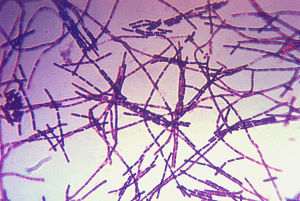Flint, Michigan is a community of 100K residents, the majority of whom are African-American or of lower socioeconomic status. In the recent Democratic debate held in Flint, one mother spoke to the huge challenges that plague the community, including mold in classrooms, unqualified teachers, and the water crisis. In 2014, city officials decided to switch from the Detroit water supply, which gets fresh water from Lake Huron, to the Flint River, which has a long history of contamination, particularly with lead.
Flint residents knew of this contamination and saw brown water flowing in from their taps. They complained for years, long before the media hype, but city officials ignored their voices. Some residents noticed clumps of their hair falling out and an odd taste and smell to the water they were drinking.1
To investigate these claims, Dr. Mona Hanna-Attisha, a pediatrician at Hurley Medical Center and assistant professor at Michigan State University, conducted a city-wide study on the water in Flint. When she recognized that there were alarming levels of lead in the water, she alerted the Environmental Protection Agency (EPA).2 Only then did elected officials start taking residents’ complaints to heart.
Dr. Hanna-Attisha earned the Freedom of Expression Courage Award as well as the respect and gratitude of her patients and peers by speaking up. However, the brave doctor tells CNN in an interview that she was attacked viciously by the state of Michigan when she first presented her research and tried to warn officials of the ongoing crisis. She says she felt “physically ill”3 because of the backlash and professionally vulnerable because her reputation as a physician and researcher was at stake.
Despite the potential professional consequences, Dr. Hanna-Attisha fought for her patients and for the children of Flint, Michigan. In doing so she sent out an important message to physicians: sometimes we must be the voice of the people. It is our responsibility to fight for our patients, whether that means exposing a public health crisis, or more mundane daily tasks like calling health insurance agents to get a patient’s medication covered.
Flint is not the only city in the United States that is dealing with public health crises. However, this particular crisis and Dr. Hanna-Attisha’s role in bringing it to light serves as a reminder for all physicians and medical students: we are public servants and have an obligation to report public health issues in order to ensure the safety of our patients and the general population.
As the notable English physician Sir Henry Howarth Bashford once said, “After all we are merely servants of the public, in spite of our M.D.s and hospital appointments”. Let us not forget this role as we continue through medical school and enter into our practices.
Sources:
1http://www.motherjones.com/politics/2016/01/mother-exposed-flint-lead-contamination-water-crisis
2http://www.freep.com/story/news/local/michigan/flint-water-crisis/2016/01/30/flint-water-lead-health-qa/79475642/
3http://www.cnn.com/2016/01/21/health/flint-water-mona-hanna-attish/
Featured image:
The Flint River, August 2014 by George Thomas



